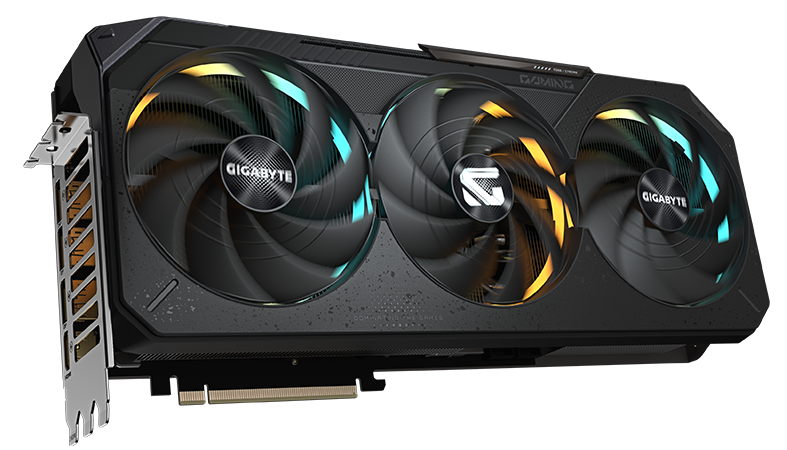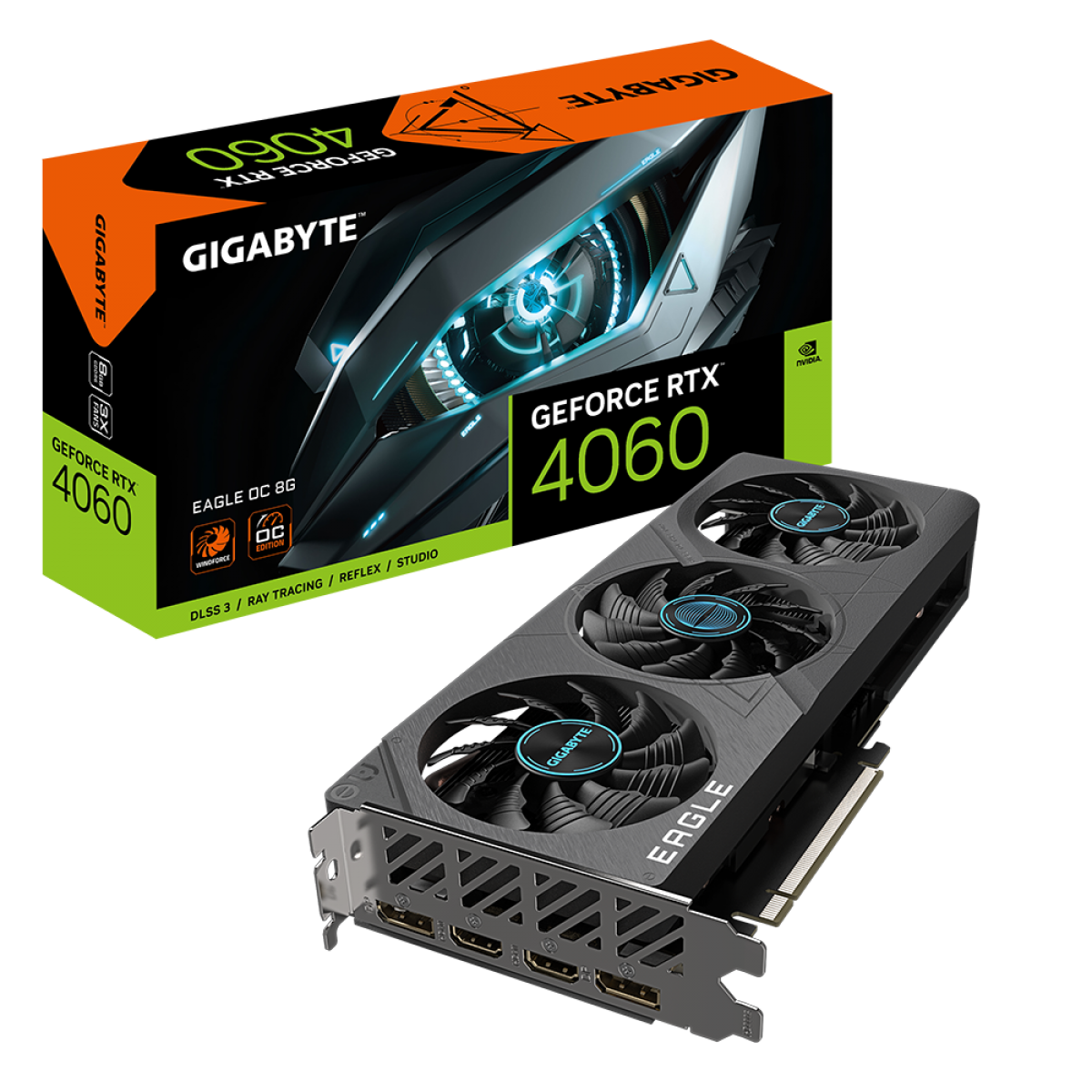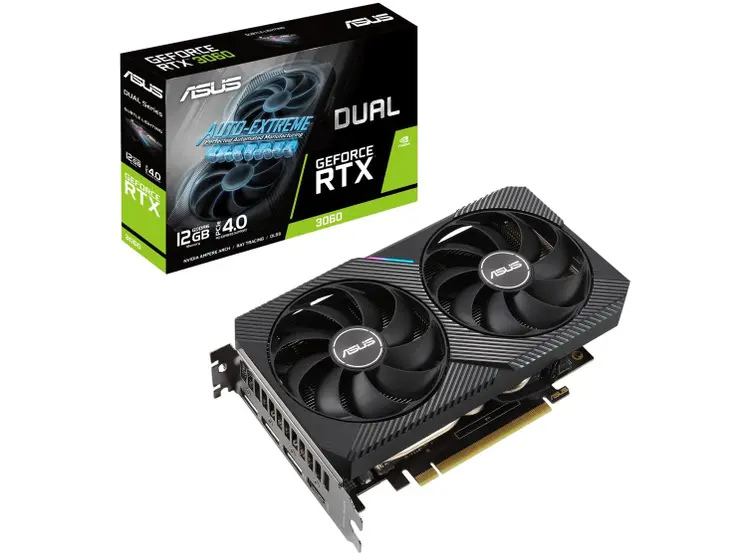The Best GPUs To Buy In 2025
Discover the best graphics cards of 2025 with our expert analysis. From budget-friendly options to high-end powerhouses, find the perfect GPU for gaming, work, and everything in between.
Choosing the right graphics card in 2025 has become one of the most challenging decisions for PC enthusiasts and gamers alike. With new releases from AMD, Nvidia, and Intel shaking up the market, along with fluctuating prices and supply constraints, finding the perfect GPU for your needs requires careful consideration.
Whether you're building your first gaming rig, upgrading from an older card, or looking for the ultimate 4K gaming experience, the graphics card you choose will define your computing experience for years to come. The good news? 2025 has brought us some incredible options across every price range.
In this comprehensive guide, I'll walk you through the best graphics cards available right now, helping you navigate through specifications, performance benchmarks, and real-world value. From budget-conscious choices that deliver solid 1080p gaming to high-end monsters that push 4K gaming to new heights, we've got you covered.
Summary
- Current GPU Market Overview
- Best Overall GPU: AMD RX 9070
- Best Value Choice: RX 9060 XT 16GB
- Best Budget Option: Intel Arc B570
- Best Mid-Range: RTX 5070 Ti
- Best High-End: RTX 5090
- Understanding GPU Specifications
- Ray Tracing and DLSS Considerations
- Power Requirements and Cooling
- Future-Proofing Your GPU Purchase
- Conclusion
Current GPU Market Overview
The GPU landscape in 2025 is unlike anything we've seen before. With AMD's RDNA 4 architecture bringing significant improvements to ray tracing performance, Nvidia's RTX Blackwell series introducing Multi Frame Generation, and Intel's Arc B-series cards offering compelling budget alternatives, there's never been more choice.
However, this abundance comes with challenges. Pricing remains volatile due to supply constraints and tariff uncertainties, making it crucial to understand not just performance but real-world value at current market prices.
The most significant development has been AMD's focus on the mainstream market with their RX 9000 series, while Nvidia continues to dominate the high-end space. Intel, meanwhile, has carved out a niche in the budget segment with improved drivers and competitive pricing.
For most gamers, the sweet spot lies between $300-$800, where you'll find cards capable of excellent 1440p gaming and decent 4K performance with upscaling technologies.

Best Overall GPU: AMD RX 9070
The AMD Radeon RX 9070 has emerged as our top pick for the best overall graphics card in 2025. This second-tier RDNA 4 GPU offers an exceptional balance of performance, features, and value that makes it perfect for most PC gamers.
What makes the RX 9070 special:
The RX 9070 delivers performance remarkably close to the more expensive RX 9070 XT, often within 2-3% when both cards are pushed to their limits. With 16GB of GDDR6 memory, you'll have plenty of headroom for high-resolution textures and future games.
The card excels at 1440p gaming, consistently delivering smooth framerates at high settings across modern titles. For 1080p gaming, it's absolutely dominant, providing headroom for maximum settings and high refresh rates.
AMD's improvements to ray tracing with RDNA 4 are substantial. While not quite matching Nvidia's top-tier RT performance, the gap has narrowed considerably, making ray tracing a viable option rather than a performance killer.
Overclocking potential is another highlight. The RX 9070 responds well to both overclocking and undervolting, often achieving performance levels that rival the RX 9070 XT without significantly increased power consumption.
The introduction of FSR 4 with AI enhancement gives AMD users access to superior upscaling quality, though game support is still limited compared to DLSS.
Best Value Choice: RX 9060 XT 16GB
If you're budget-conscious but don't want to compromise on VRAM, the AMD RX 9060 XT 16GB represents outstanding value in today's market.
This card punches well above its weight class, offering 16GB of memory at a price point where competitors typically provide 8GB. For under $400, you're getting a card that can handle modern games at 1080p with high settings and provides decent 1440p performance.
Performance highlights:
At 1080p, the RX 9060 XT trades blows with Nvidia's more expensive RTX 5060 Ti, sometimes even edging ahead in memory-intensive scenarios. The extra VRAM becomes particularly valuable in games with high-resolution texture packs or when running multiple applications.
The card runs remarkably cool and efficient, with a TGP of just 160W. This makes it perfect for smaller builds or systems with modest power supplies. You won't need to upgrade your entire system to accommodate this GPU.
Ray tracing performance, while not class-leading, is respectable thanks to RDNA 4's improvements. You can enjoy ray-traced reflections and lighting in many games with some settings adjustments.
The main limitation is overclocking headroom. AMD has clearly pushed this silicon to its limits from the factory, leaving little room for user tweaking. However, the out-of-box performance is strong enough that this rarely matters.
Best Budget Option: Intel Arc B570
The Intel Arc B570 might be the most surprising recommendation on this list, but it's earned its place through solid performance and aggressive pricing.
Why choose Intel Arc B570:
At around $250-260, the B570 offers 10GB of GDDR6 memory and solid 1080p gaming performance. While it can't match the raw power of AMD or Nvidia alternatives, it provides excellent value for budget-conscious builders.
The Xe2 architecture brings modern features including hardware-accelerated ray tracing and XeSS upscaling support. When XeSS is available, it often produces better image quality than AMD's FSR 3.x.
Driver stability has improved dramatically since the first Arc generation. While you may still encounter occasional issues with brand-new games, Intel's driver team has been responsive to community feedback.
Important considerations:
The B570 works best when you're willing to adjust settings. Expect to use high rather than ultra settings in demanding games, and consider XeSS upscaling for better performance in supported titles.
If you can find an RTX 5050 near its MSRP, that might be a better choice with approximately 10-15% better performance. However, stock availability makes the B570 a more practical recommendation right now.
For builders on extremely tight budgets who need modern GPU features, the Arc B570 provides a pathway to decent gaming without breaking the bank.

Best Mid-Range: RTX 5070 Ti
The Nvidia RTX 5070 Ti sits at the perfect intersection of performance and premium features, making it ideal for enthusiasts who want high-end capabilities without flagship pricing.
RTX 5070 Ti strengths:
This card delivers excellent 1440p performance and respectable 4K gaming when combined with DLSS 4 upscaling. Native 4K performance is solid, but the real magic happens when you enable Nvidia's advanced features.
Multi Frame Generation (MFG) is where the RTX 5070 Ti truly shines. This technology can insert up to three AI-generated frames between each rendered frame, dramatically boosting perceived performance in supported games.
The 16GB of GDDR7 memory provides ample headroom for high-resolution gaming and ensures the card won't be VRAM-limited in future titles. The memory bandwidth of 896 GB/s keeps everything running smoothly.
Overclocking enthusiasts will love this card. The GB203 silicon has significant headroom, often reaching 3+ GHz without excessive heat or power consumption. It's one of the most overclock-friendly GPUs in recent memory.
DLSS 4 with Transformer models represents the current pinnacle of AI upscaling technology. The image quality improvements over previous generations are substantial, often making upscaled content look better than native rendering.
Pricing reality check:
The main drawback is pricing. While the MSRP is $750, real-world prices often approach $900-950, which brings it uncomfortably close to RTX 5080 territory. At MSRP, it's an easy recommendation, but inflated pricing makes the value proposition more questionable.
Best High-End: RTX 5090
For those who demand absolute maximum performance regardless of cost, the Nvidia RTX 5090 stands alone as the ultimate gaming GPU.
RTX 5090 capabilities:
With 21,760 shader cores and 32GB of GDDR7 memory, this card can handle literally anything you throw at it. Native 4K gaming at maximum settings? Easy. High refresh rate 4K with ray tracing? No problem.
Multi Frame Generation reaches its full potential here, delivering frame rates that would be impossible through traditional rendering alone. The combination of raw computational power and AI enhancement creates gaming experiences that feel almost surreal.
Content creation powerhouse:
Beyond gaming, the RTX 5090 excels at content creation, AI workloads, and professional applications. The massive memory buffer and bandwidth make it ideal for 8K video editing, 3D rendering, and machine learning tasks.
The reality of ownership:
Current street prices hover around $3,000, making this card an extreme luxury purchase. You'll also need a robust power supply (850W+ recommended) and excellent case ventilation to handle the 575W TGP.
For most users, the RTX 5070 Ti or RX 9070 XT will provide 90% of the gaming experience at a fraction of the cost. The RTX 5090 is primarily for enthusiasts who want bragging rights and have the budget to match their ambitions.
Understanding GPU Specifications
When shopping for a graphics card, several key specifications determine performance and suitability for your needs.
Memory (VRAM) considerations:
Modern games are increasingly memory-hungry. 8GB is becoming the minimum for comfortable 1440p gaming, while 16GB provides better future-proofing. High-resolution texture packs, ray tracing, and 4K gaming can quickly consume available VRAM.
Cards with insufficient VRAM will experience stuttering and performance drops when memory limits are exceeded. It's better to invest in more VRAM upfront than upgrade sooner due to memory constraints.
Compute units and clock speeds:
More compute units (shader cores) generally mean better performance, but architecture efficiency matters more than raw numbers. A card with fewer but more efficient cores can outperform one with more legacy cores.
Memory bandwidth affects how quickly the GPU can access textures and data. Higher bandwidth reduces bottlenecks in memory-intensive scenarios like high-resolution gaming and ray tracing.
| GPU Tier | Recommended VRAM | Target Resolution | Typical Price Range |
|---|---|---|---|
| Budget | 8-10GB | 1080p | $200-350 |
| Mid-range | 12-16GB | 1440p | $400-700 |
| High-end | 16-24GB | 4K | $800-1500 |
| Flagship | 24GB+ | 4K+ | $1500+ |
Ray Tracing and DLSS Considerations
Ray tracing has evolved from a nice-to-have feature to an essential part of modern gaming. The latest generation of GPUs handles ray-traced lighting, reflections, and shadows much better than previous generations.
AMD's RDNA 4 cards show significant improvement in ray tracing performance compared to RDNA 3, though Nvidia still maintains an advantage in the most demanding RT scenarios. For most users, the difference is less noticeable than benchmark charts might suggest.
Upscaling technologies:
DLSS 4 represents the current gold standard for AI upscaling. The Transformer-based models produce exceptional image quality, often looking better than native rendering while providing substantial performance gains.
FSR 4 brings AMD closer to DLSS quality through AI enhancement, but game support remains limited. FSR 3.1 and earlier versions work on any GPU but typically produce softer images.
XeSS from Intel often produces better results than FSR but isn't as widely adopted. It works on any GPU but performs best on Arc cards with dedicated XMX acceleration.
The key is choosing a GPU that supports the upscaling technology most commonly found in games you play. DLSS has the broadest adoption, making Nvidia cards more versatile for users who rely on upscaling.

Power Requirements and Cooling
Modern GPUs are more power-efficient than previous generations, but they still demand significant electrical power and cooling capacity.
Power supply recommendations:
Budget cards (RX 9060 XT, RTX 5060): 550-650W PSU
Mid-range cards (RX 9070, RTX 5070 Ti): 700-750W PSU
High-end cards (RTX 5090): 850W+ PSU
Always choose a high-quality PSU from reputable manufacturers. Cheap power supplies can damage expensive graphics cards and other components.
Cooling considerations:
Most modern GPUs feature excellent cooling solutions out of the box. Look for cards with dual or triple fan designs for better thermal performance and lower noise levels.
Case airflow matters more than GPU cooler design. Ensure your case has adequate intake and exhaust fans to prevent heat buildup. Poor case ventilation can cause even the best GPU coolers to struggle.
Thermal throttling occurs when GPUs get too hot and automatically reduce performance to prevent damage. Maintaining good temperatures ensures consistent performance and longer component life.
Consider the physical dimensions of your chosen GPU. High-end cards can be quite large, and some cases may not accommodate them. Check clearance for both length and height before purchasing.
Future-Proofing Your GPU Purchase
When investing in a new graphics card, consider how long you want it to remain relevant for your gaming needs.
VRAM is crucial for longevity. Games continuously increase their memory requirements, and cards with insufficient VRAM become obsolete faster than those with adequate memory. 16GB should be considered the minimum for cards expected to last 3-4 years.
Feature support matters for future gaming experiences. Ray tracing support, modern video codecs, and AI acceleration capabilities will become increasingly important as games and applications evolve.
Driver support longevity varies between manufacturers. Nvidia typically provides longer-term driver support, while AMD focuses resources on newer architectures. Intel is still establishing their long-term support patterns.
Consider your upgrade cycle. If you upgrade frequently (every 1-2 years), you can prioritize current performance over future-proofing. If you prefer keeping cards for 4+ years, invest in more VRAM and newer features.
Resolution trends continue moving upward. 1440p is becoming the new 1080p, and 4K adoption is accelerating. Choose a card that can handle your target resolution not just today, but for the next few years.
The best approach is buying slightly more GPU than you currently need, ensuring comfortable performance throughout the card's useful life rather than struggling in later years.
Conclusion
The GPU market in 2025 offers something for everyone, from budget-conscious builders to performance enthusiasts. The AMD RX 9070 emerges as our top overall pick, delivering excellent 1440p performance with 16GB of VRAM at a reasonable price point.
For value seekers, the RX 9060 XT 16GB provides outstanding bang for buck, while the Intel Arc B570 serves budget builders who need modern features without premium pricing. Enthusiasts should consider the RTX 5070 Ti for its advanced features and strong overclocking potential.
At the extreme high end, the RTX 5090 remains unmatched for those who demand absolute maximum performance regardless of cost.
Key takeaways for your GPU purchase:
Prioritize VRAM over raw performance for longevity. Memory requirements continue growing, and insufficient VRAM causes more problems than slightly lower compute power.
Consider your actual gaming needs rather than benchmark scores. A card that delivers smooth performance at your preferred resolution and settings is better than one with higher numbers but poor real-world experience.
Factor in total system cost. High-end GPUs require capable CPUs, adequate power supplies, and proper cooling to reach their potential. Budget accordingly for supporting components.
Don't overlook features like upscaling support and ray tracing capabilities. These technologies significantly impact your gaming experience and future compatibility with new titles.
The right GPU for you depends on your budget, performance expectations, and upgrade timeline. Whether you choose AMD's excellent value proposition, Nvidia's feature leadership, or Intel's budget alternative, 2025's GPU lineup ensures you'll find something that meets your needs.
Remember to shop carefully in today's volatile pricing environment. Patience often rewards buyers with better deals, and avoiding inflated prices means more money for games and other components.








